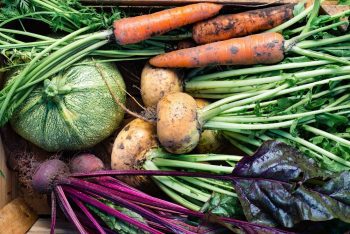August 1st, 2018
By Otherwords)
Guest writer for Wake Up World
We should be supporting the small farmers who sell at farmers markets, not the corporate giants that hurt our health and environment.
Summer: the season of barbecues, baseball games, and backyard fun. It’s also the time of year when the American farming industry comes into full swing producing the crops we hold near and dear.
The pastoral ideal of golden fields of corn and wheat is what comes to mind for most people, and they’d be on the right track. Corn, soybeans, and wheat are the three biggest crops grown in this country, and — along with cows, pigs, and chicken — make up the bulk of our farming output.
[pro_ad_display_adzone id=”110028″]
There’s a reason for this: The federal government heavily subsidizes those products. In fact, the bulk of U.S. farming subsidies go to only 4 percent of farms — overwhelmingly large and corporate operations — that grow these few crops.
For the most part, that corn, soy, and wheat doesn’t even go to feed our populace. More of it goes into the production of ethanol — which is also heavily subsidized — and into the mouths of those cows, pigs, and chickens stuffed into feedlots. Those grains purchased by the feedlots are also federally subsidized, allowing producers to buy grains at below market prices.
When we do eat these foods, they’re sold back to us in unhealthy forms, pumped full of high fructose corn syrup and growth hormones. Large corporate farms and feedlots also poison waterways, drain aquifers, and pollute the air.
Meanwhile, small farmers continue to go broke, thanks to the low cost of foods subsidized by the government for corporate buyers. Even the few companies that provide seeds and equipment for farmers receive their own tax breaks from state governments, while farmers are stuck with the bill of goods sold to them from companies like John Deere and Monsanto.
Does this help feed America? Not really: We still buy most of our food from far-flung places. So why is our government subsidizing this production model?
Plain and simple: Corporations buy these subsidies for pennies on the dollar.
In 2011, the agribusiness industry spent around $100 million to lobby and campaign for federal support. They got billions in subsidies in return, making them the biggest recipients of corporate welfare.
This is disgraceful. Why should our government support big businesses that poison us and our environment?
Congress is now considering a new Farm Bill. The recently shot-down first draft cut funding for rural development and conservation programs, while opening up loopholes for corporate farms to access more subsidies. That should open the field for newer, better ideas.
All politicians champion small businesses, especially those in the heartland where most agricultural production takes places. If they’re going to subsidize agriculture, why not give more support to family farms, which often farm more sustainably and grow much healthier foods?
Instead of supporting factory farms and mono-crops, we could provide incentives for crop rotations, reduced usage of pesticides and herbicides, pasture-raised meat, and organic practices. Studies show that practices like organic farming produce only marginally less than conventional farms.
These practices are a part and parcel of a growing segment of the agricultural industry bolstered by health and environmentally conscious consumers. Farmers who sell their products at farmers markets and through community supported agriculture groups should be heralded and paid for their support of the community.
This could also lower the costs of healthier foods, which often are priced prohibitively for the people who need them most. Expanding the market for food farmed sustainably and ethically grown would benefit all consumers — and address the health crisis brought on by the mass consumption of unhealthy foods.
Why should we subsidize things that harm us all when we can help out the farmers who support a better life and environment for us all?
About the author:
Brian Wakamo is part of the Global Economy Project at the Institute for Policy Studies. This article courtesy of Otherwords.org.
[pro_ad_display_adzone id=”110027″]







